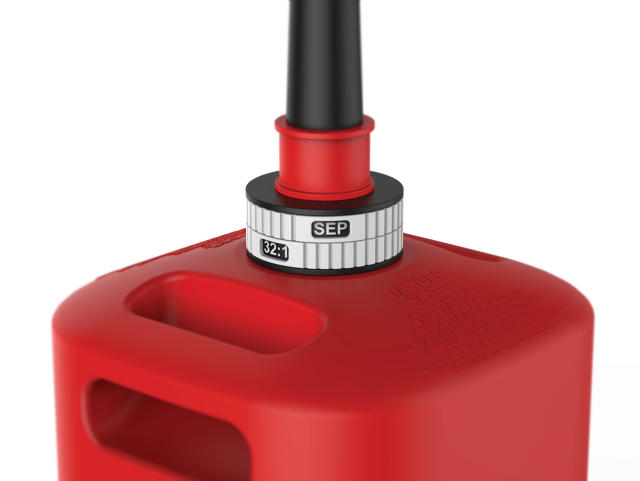In the past 15 years, gas cans have been responsible for nearly a dozen deaths and 1,200 injuries. A small spark or flame shoots up the nozzle, and boom. Game over. The latest concept from Somerville, Massachusetts-based product design and consulting agency, the Gas Cube, aims to evolve the gas can into something prettier, more functional, and a lot less dangerous.
The common gas can hasn't changed much since the 1930s. Developed in Germany for military use, then adapted into the familiar red plastic container that we all know today, the only real design changes have been in response to government regulations: for example, to make the caps on all gas cans child-proof as part of the Children's Gasoline Burn Prevention Act in 2008. But that's not to say that the design is timeless. In fact, it desperately needs an update, argues Altitude's Alex Tee.

In Tee's Gas Cube concept, the chances of the container exploding are dramatically decreased by the addition of a flame arrestor in the nozzle. This small piece of mesh screen filters out flames and sparks like the mesh in front of a fireplace. Flame arrestors are not unheard of in gas cans; many already come with them.
In addition to a flame arrestor, the cap of Tee's Gas Cube has a seal that is replaced every year to maintain the Cube's air tightness, preventing dangerous hydrocarbons from leaking out. This seal also says how old the gas inside is—older gas is less efficient than new gas, and can be bad for your engines—and what type it is, so you don't put diesel in, say, your car by mistake.

Like other concepts Altitude has released (for example, this robot bottle caps for home mixologists), the Gas Cube concept is meant to spark a conversation about how design can fix products that we don't even really think of as being broken. There's no reason the Gas Cube couldn't become a reality. Tee estimates that the Gas Cube's design changes would only cost a few dollars more than current gas can designs.